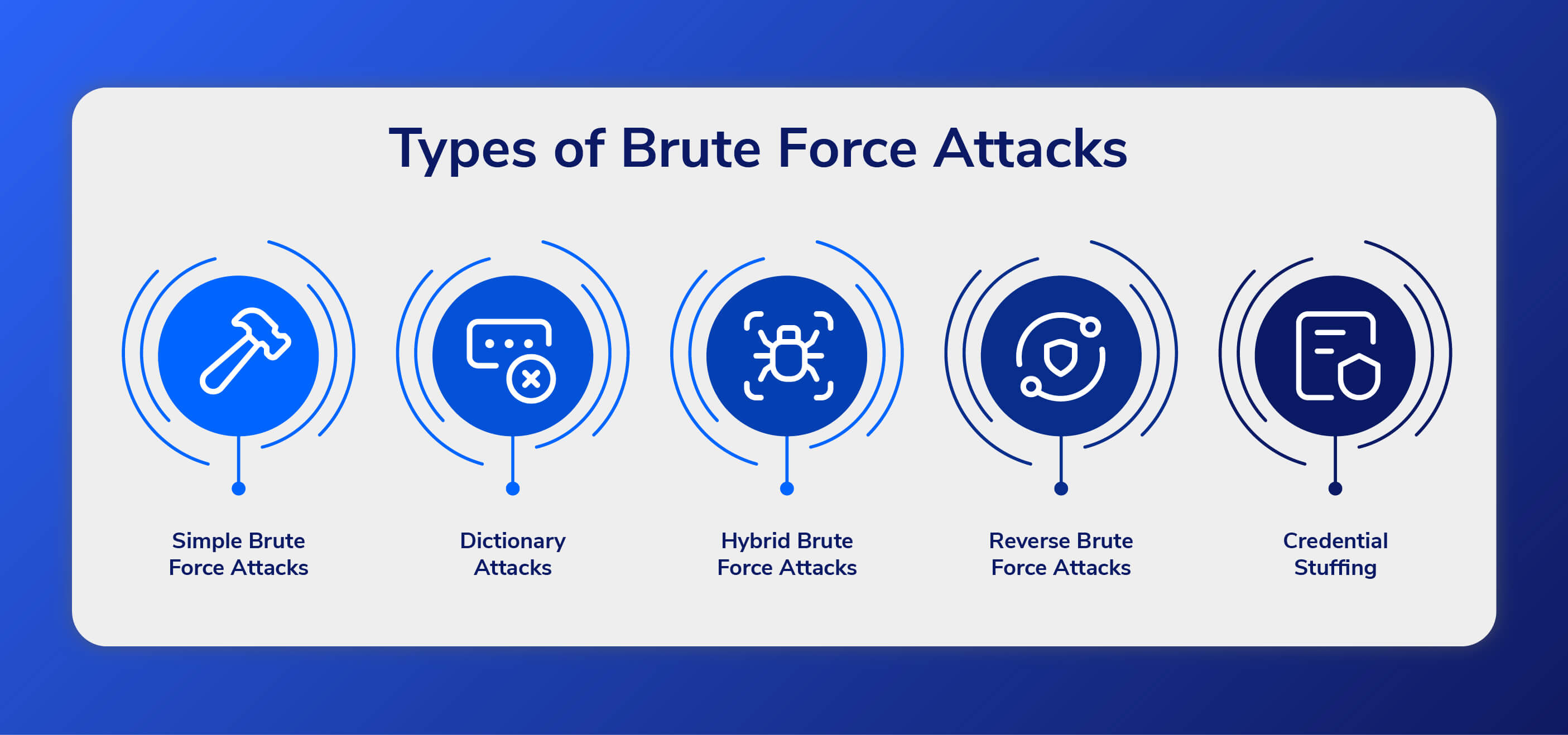Types of Brute Force Attack

Brute force attacks come in various forms, targeting different aspects of security systems. Here are some common types of brute force attacks:
-
Password Brute Force:
- In this type of attack, an attacker systematically tries all possible combinations of passwords until the correct one is found. This is often used to gain unauthorized access to user accounts, applications, or systems.
-
Credential Stuffing:
- Instead of trying different passwords on a single account, credential stuffing involves using known username-password pairs obtained from previous data breaches on multiple sites. Attackers rely on users who reuse passwords across different platforms.
-
Dictionary Attack:
- Unlike a random character combination used in a traditional brute force attack, a dictionary attack involves trying a list of common words or phrases. The attacker uses a predefined dictionary that may include common passwords, words, or phrases.
-
Reverse Brute Force Attack:
- In this scenario, the attacker fixes a common password and systematically tries various usernames until a valid combination is found. This approach is effective when the attacker has a specific password in mind.
-
Credential Cracking:
- Credential cracking involves decrypting hashed passwords by trying all possible combinations until the correct match is found. It is particularly effective when passwords are weak and not properly hashed.
-
Token Brute Force:
- This type of attack targets authentication tokens or session cookies. Attackers try to guess or brute force these tokens to gain unauthorized access to user accounts without having to know the actual password.
-
Keystroke Logging:
- Keystroke logging, or keylogging, involves capturing the keystrokes of a user to obtain login credentials. While not a traditional brute force attack, the collected information can be used to gain unauthorized access.
-
Router Brute Force:
- Attackers may attempt to gain access to network routers or other networked devices by trying default or commonly used usernames and passwords. Once inside the network, they can launch further attacks.
-
Encryption Brute Force:
- This attack involves attempting to decrypt encrypted data by trying all possible keys. It is often used in the context of breaking encryption algorithms when the encryption key is unknown.
-
File Hash Brute Force:
- In cases where files or data are protected by cryptographic hash functions, attackers may attempt to brute force the hash to reveal the original content. This can be used to crack password hashes or verify the integrity of files.
-
VoIP PIN Brute Force:
- Voice over Internet Protocol (VoIP) systems may use Personal Identification Numbers (PINs) for access. Attackers can attempt to brute force these PINs to gain unauthorized access to VoIP systems.
It's important for individuals and organizations to be aware of these different types of brute force attacks and implement appropriate security measures to protect against them. This includes using strong, unique passwords, implementing account lockout policies, and employing additional security layers like multi-factor authentication. Regularly monitoring and auditing security systems can also help detect and mitigate potential brute force attacks.
Thank you.
